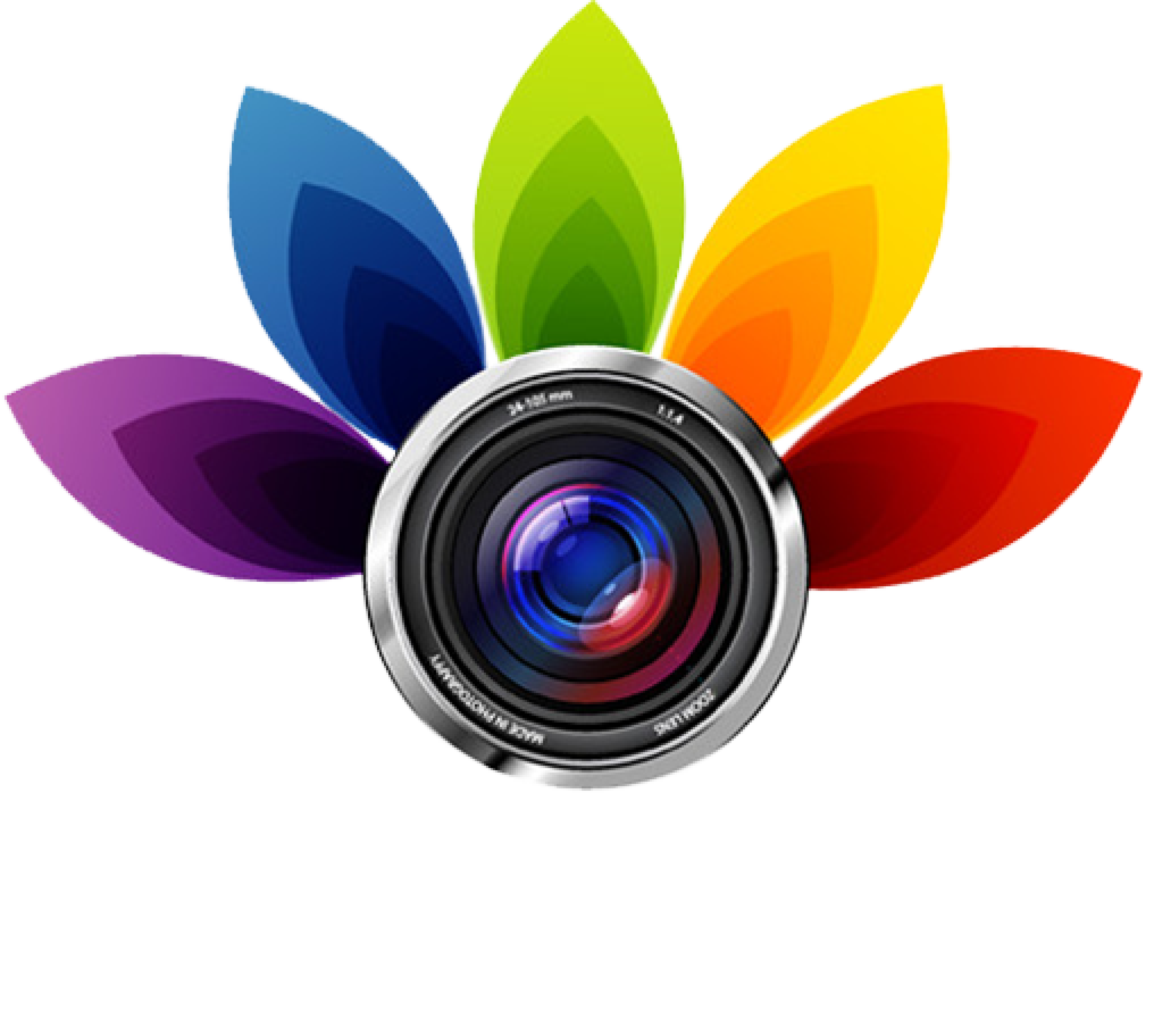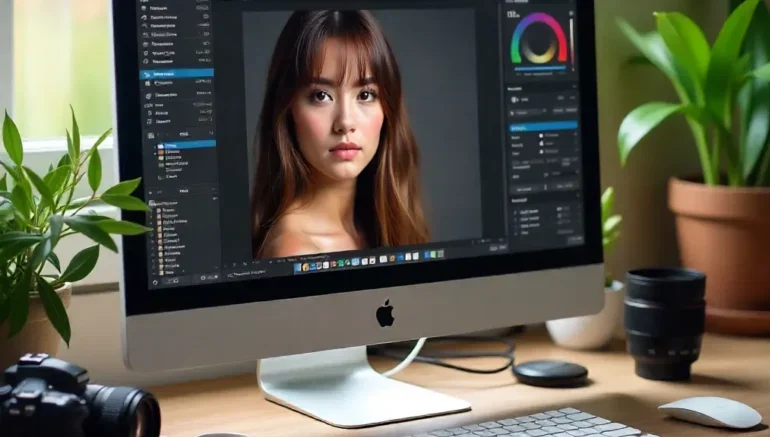
Top 10 Manual Editing Tips for Professional Photographers
AI tools are everywhere, making photo editing faster and easier than ever. Many people wonder if AI can completely replace the work of a professional photographer. While AI can handle basic tasks, professional photographers often prefer manual editing for better results. Manual editing gives them full control over every detail, from colors and lighting to textures and shadows. It allows them to express their unique style and make each photo look exactly how they imagine it.
Manual editing also helps photographers solve problems that AI often struggles with. For example, AI might miss small imperfections or make unwanted changes that reduce the photo’s quality. Professionals can adjust every element carefully, keeping the photo natural and polished. This approach may take more time, but the results are usually more creative, precise, and impressive. In this article, we’ll explore the top 10 reasons why professional photographers still trust manual editing over AI. By the end, you’ll see why hands-on editing remains a key part of high-quality photography.
Professional Photographers Have Full Control Over Every Detail
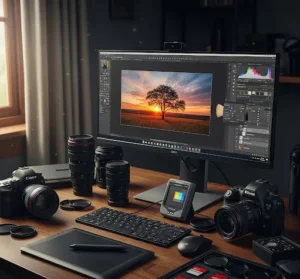 Professional photographers prefer manual editing because it gives them full control over every detail in a photo. Unlike AI, which applies automatic adjustments, manual editing allows photographers to decide exactly how colors, lighting, and contrast should look. This control is especially important for challenging shots where small changes can make a big difference. By editing manually, photographers can fine-tune each element to match their vision and maintain the overall quality of the image. This makes sure that every photo looks polished, professional, and true to the photographer’s style.
Professional photographers prefer manual editing because it gives them full control over every detail in a photo. Unlike AI, which applies automatic adjustments, manual editing allows photographers to decide exactly how colors, lighting, and contrast should look. This control is especially important for challenging shots where small changes can make a big difference. By editing manually, photographers can fine-tune each element to match their vision and maintain the overall quality of the image. This makes sure that every photo looks polished, professional, and true to the photographer’s style.
Having full control also helps photographers solve issues that AI might miss or handle incorrectly. They can carefully adjust shadows, highlights, and textures without losing important details. Manual editing also allows them to experiment and make creative choices that AI cannot replicate.
Try these tips for better results:
- Always work on a copy of your original photo to avoid mistakes.
- Adjust colors and lighting gradually instead of making extreme changes.
- Zoom in to check small details like edges, textures, or reflections.
- Take breaks to see your work with fresh eyes before finalizing edits.
AI Cannot Match the Creativity of Professional Photographers
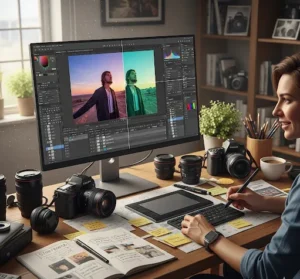 Professional photographers prefer manual editing because AI cannot match their creativity. AI follows preset patterns, which can make photos look uniform or predictable, while manual editing allows photographers to experiment with colors, lighting, and composition to create a unique style. This freedom helps them highlight important details, set the mood, and tell a story through each image. Manual editing also makes it easier to fix tricky problems in creative ways that AI might miss. For readers looking to boost their own creativity, try using layers to test effects, adjust lighting softly, study styles you admire, and trust your instincts to make bold choices.
Professional photographers prefer manual editing because AI cannot match their creativity. AI follows preset patterns, which can make photos look uniform or predictable, while manual editing allows photographers to experiment with colors, lighting, and composition to create a unique style. This freedom helps them highlight important details, set the mood, and tell a story through each image. Manual editing also makes it easier to fix tricky problems in creative ways that AI might miss. For readers looking to boost their own creativity, try using layers to test effects, adjust lighting softly, study styles you admire, and trust your instincts to make bold choices.
Try these tips:
- Use different layers to experiment with colors and effects without altering the original photo.
- Mix soft adjustments in lighting, shadows, and highlights for a unique look.
- Study the work of photographers you admire and try to understand their style choices.
- Trust your instincts and don’t be afraid to make bold creative changes.
Manual Editing Fixes Complex Problems Better
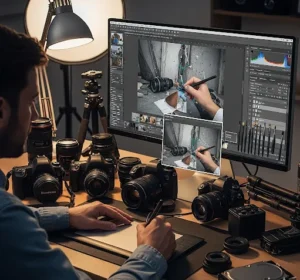 Manual editing allows professional photographers to fix complex problems that AI often struggles with. Issues like removing unwanted objects, correcting tricky backgrounds, or balancing uneven lighting require careful attention and precision. AI may make mistakes or leave noticeable errors, but manual editing makes every detail is handled correctly. Photographers can take the time to adjust each part of the photo exactly how they want, keeping the image natural and polished.
Manual editing allows professional photographers to fix complex problems that AI often struggles with. Issues like removing unwanted objects, correcting tricky backgrounds, or balancing uneven lighting require careful attention and precision. AI may make mistakes or leave noticeable errors, but manual editing makes every detail is handled correctly. Photographers can take the time to adjust each part of the photo exactly how they want, keeping the image natural and polished.
Consider trying these tips:
- Use layers to isolate areas that need correction without affecting the whole image.
- Zoom in to carefully remove small imperfections or distractions.
- Adjust shadows, highlights, and colors gradually to maintain realism.
- Experiment with different tools to find the best approach for each problem.
Professional Photographers Makes Natural and Realistic Results
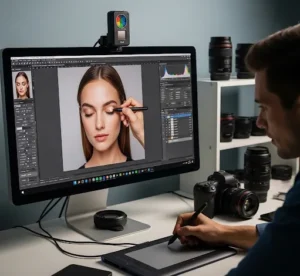 Professional photographers often prefer manual editing because it makes photos look natural and realistic. AI tools can sometimes overdo effects or make changes that look artificial, while manual editing allows photographers to control every detail carefully. By adjusting lighting, colors, shadows, and textures by hand, they can maintain the true look of the subject and scene. This approach is especially important for portraits, product shots, and landscapes where realism matters most.
Professional photographers often prefer manual editing because it makes photos look natural and realistic. AI tools can sometimes overdo effects or make changes that look artificial, while manual editing allows photographers to control every detail carefully. By adjusting lighting, colors, shadows, and textures by hand, they can maintain the true look of the subject and scene. This approach is especially important for portraits, product shots, and landscapes where realism matters most.
For more natural results, try these simple tips:
- Make small, gradual adjustments instead of drastic changes.
- Compare edits with the original photo to maintain realism.
- Focus on small details like skin tone, reflections, and shadows.
- Take breaks and view your edits with fresh eyes to spot unnatural changes.
Every Photo Tells a Unique Story
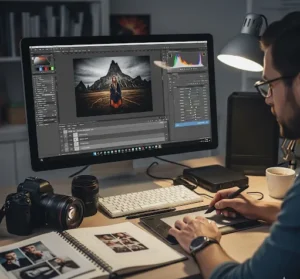 Professional photographers choose manual editing because it helps every photo tell a unique story. AI can apply the same adjustments to all images, which can make them look similar, but manual editing allows photographers to highlight what makes each photo special. By carefully adjusting colors, lighting, and composition, they can emphasize the mood, emotion, or message they want to convey. This attention to detail makes each image stand out and feel personal.
Professional photographers choose manual editing because it helps every photo tell a unique story. AI can apply the same adjustments to all images, which can make them look similar, but manual editing allows photographers to highlight what makes each photo special. By carefully adjusting colors, lighting, and composition, they can emphasize the mood, emotion, or message they want to convey. This attention to detail makes each image stand out and feel personal.
Try these tips:
- Focus on the main subject and adjust the background to support the story.
- Use lighting and color to set the mood or emotion.
- Highlight details that convey meaning or personality.
- Experiment with different compositions to see what best tells the story.
Fine-Tuning Details Takes Precision Only Humans Can Give
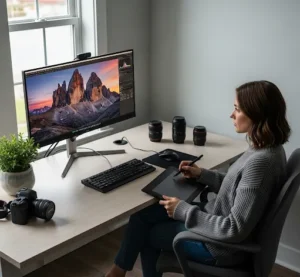 Professional photographers rely on manual editing because it allows them to fine-tune details with a level of precision that AI cannot achieve. Small adjustments in areas like skin texture, shadows, highlights, and reflections can make a huge difference in the final image. AI may overlook these small elements or apply changes too broadly, but manual editing makes every detail is handled carefully. This precision helps produce polished, high-quality photos that look professional and natural.
Professional photographers rely on manual editing because it allows them to fine-tune details with a level of precision that AI cannot achieve. Small adjustments in areas like skin texture, shadows, highlights, and reflections can make a huge difference in the final image. AI may overlook these small elements or apply changes too broadly, but manual editing makes every detail is handled carefully. This precision helps produce polished, high-quality photos that look professional and natural.
Try these simple tips:
- Zoom in closely to check edges, textures, and small imperfections.
- Make gradual changes rather than large, sudden adjustments.
- Focus on one area at a time to assure accuracy.
- Compare before and after edits to catch any inconsistencies
Professional Photographers Can Follow Specific Style Requests
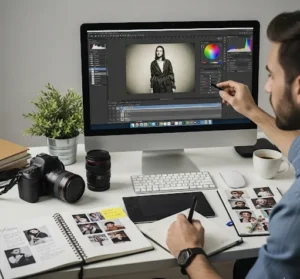 Professional photographers often choose manual editing because it allows them to follow specific style requests from clients or projects. Every client may have a unique vision, from vibrant portraits to moody, dramatic shots, and AI cannot always match these preferences accurately. Manual editing gives photographers the flexibility to adjust colors, lighting, contrast to meet the desired style. This makes sure that the final image aligns perfectly with the client’s expectations.
Professional photographers often choose manual editing because it allows them to follow specific style requests from clients or projects. Every client may have a unique vision, from vibrant portraits to moody, dramatic shots, and AI cannot always match these preferences accurately. Manual editing gives photographers the flexibility to adjust colors, lighting, contrast to meet the desired style. This makes sure that the final image aligns perfectly with the client’s expectations.
Try these tips:
- Study reference images to understand the desired look.
- Adjust tones, colors, and lighting gradually to match the style.
- Use layers and masks to apply effects selectively.
- Keep notes of your edits to maintain consistency across similar photos.
Manual Editing Protects Image Quality
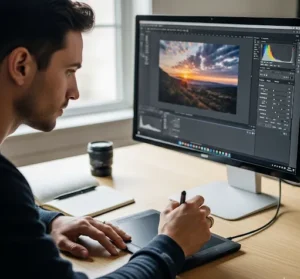 Professional photographers prefer manual editing because it helps protect the quality of their images. AI shortcuts can sometimes reduce resolution, blur details, or apply effects that make photos look less sharp and polished. By editing manually, photographers can carefully adjust every element without compromising the image’s clarity or detail. This makes sure that the final photo maintains a professional and high-quality appearance.
Professional photographers prefer manual editing because it helps protect the quality of their images. AI shortcuts can sometimes reduce resolution, blur details, or apply effects that make photos look less sharp and polished. By editing manually, photographers can carefully adjust every element without compromising the image’s clarity or detail. This makes sure that the final photo maintains a professional and high-quality appearance.
If you want to preserve image quality, try these tips:
- Always work on a high-resolution copy of your photo.
- Make adjustments gradually to avoid over-processing.
- Use non-destructive editing tools like layers and masks.
- Check your edits at 100% zoom to assure details remain sharp.
Hands-On Editing Builds Expertise and Skill
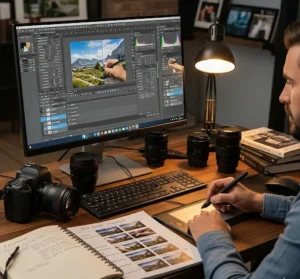 Professional photographers value manual editing because it helps them build expertise and improve their skills over time. Each photo presents new challenges, and working by hand allows them to learn different techniques and develop a deeper understanding of lighting, color, and composition. Unlike AI, which does the work automatically, manual editing requires practice and attention to detail, helping photographers refine their craft.
Professional photographers value manual editing because it helps them build expertise and improve their skills over time. Each photo presents new challenges, and working by hand allows them to learn different techniques and develop a deeper understanding of lighting, color, and composition. Unlike AI, which does the work automatically, manual editing requires practice and attention to detail, helping photographers refine their craft.
Try these tips if you want to grow your editing skills:
- Practice editing regularly to become more confident and efficient.
- Experiment with different tools and techniques to see what works best.
- Analyze your past edits to learn from mistakes and successes.
- Challenge yourself with complex edits that push your skills further.
Manual Editing Offers Flexibility for Any Project
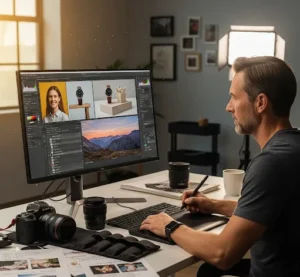 Manual editing provides professional photographers with the flexibility to handle any type of project. Every photo shoot is different, if it’s a portrait, product shot, landscape, or event coverage. AI tools are limited by preset algorithms, which may not work well for every scenario. Manual editing allows photographers to adapt their techniques to match the needs of the project, adjust details as required, and achieve the exact look they want. This flexibility makes sure that each image meets professional standards and fits the intended purpose perfectly.
Manual editing provides professional photographers with the flexibility to handle any type of project. Every photo shoot is different, if it’s a portrait, product shot, landscape, or event coverage. AI tools are limited by preset algorithms, which may not work well for every scenario. Manual editing allows photographers to adapt their techniques to match the needs of the project, adjust details as required, and achieve the exact look they want. This flexibility makes sure that each image meets professional standards and fits the intended purpose perfectly.
Flexibility also means photographers can combine multiple edits or creative techniques to improve the final image without restrictions. They can tweak colors, adjust lighting, or remove distractions in ways that AI might not allow.
Consider trying these tips:
- Understand the purpose of each photo before starting edits.
- Use layers to test different effects without affecting the original image.
- Adjust elements individually to fit the style and mood of the project.
- Don’t hesitate to experiment with creative techniques for unique results.
Conclusion
Manual editing remains a key choice for professional photographers because it offers control, creativity, precision, and flexibility that AI simply cannot match. Every detail, from colors and lighting to textures and style, can be carefully adjusted to create high-quality, natural, and unique images. While AI tools can speed up basic edits, nothing replaces the skill and personal touch of a professional. We’d love to hear from you, do you prefer using AI or manual editing in your work, and why? Share your thoughts and experiences in the comments below, and let’s start a conversation about what makes photo editing truly special. Your perspective might inspire others to try new techniques or see the value in hands-on editing.
Read Next: Top 10 Real-Life Examples of AI vs. Manual Photo Editing Results
